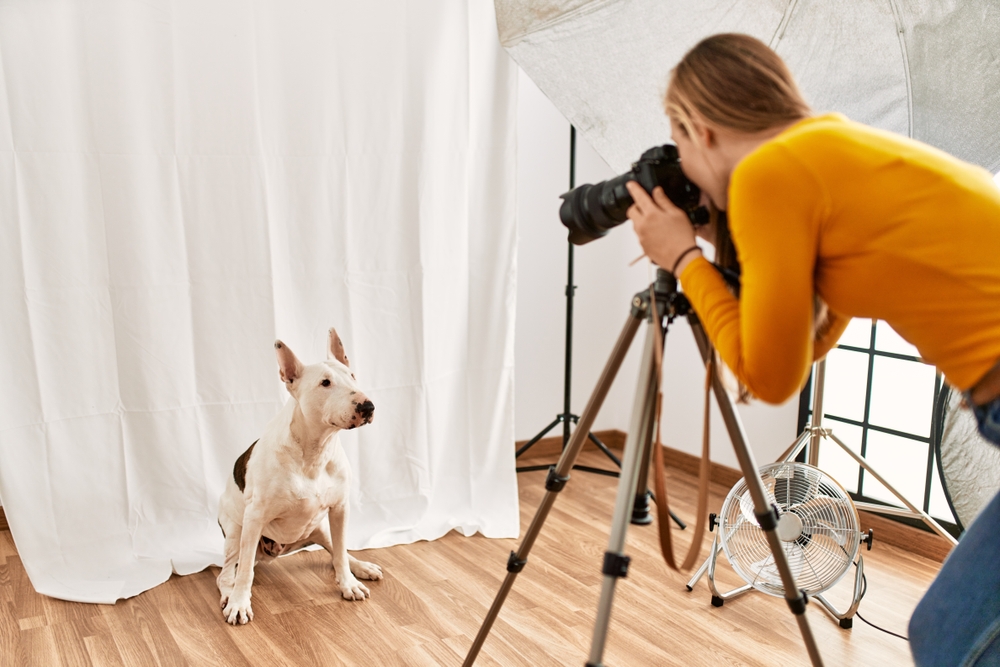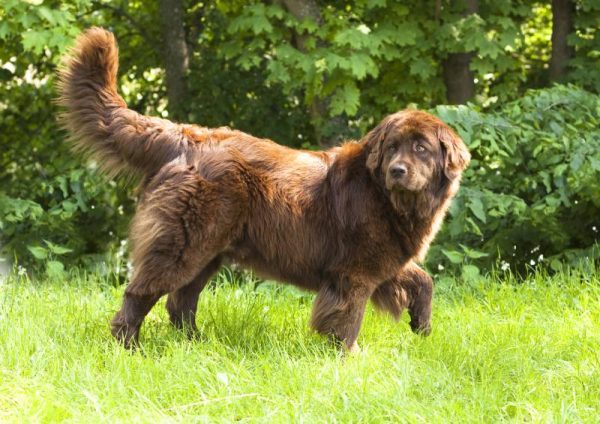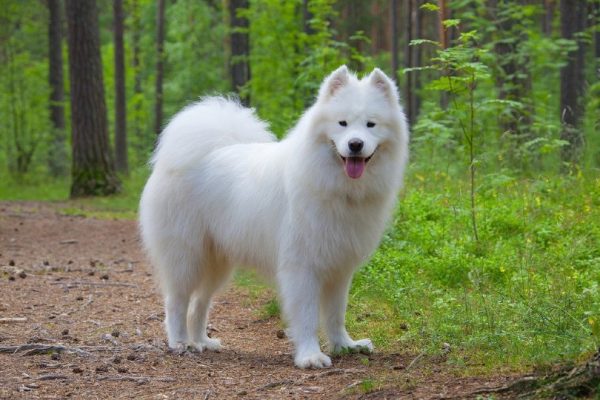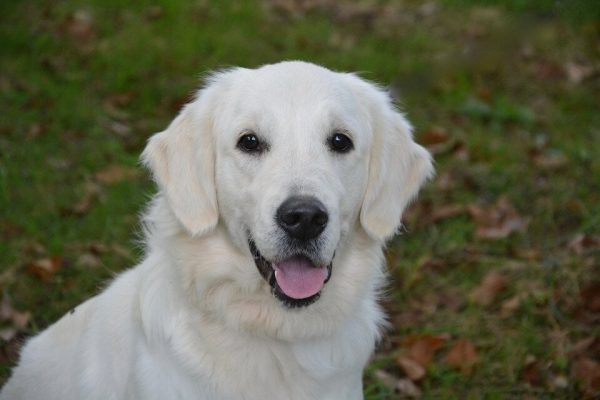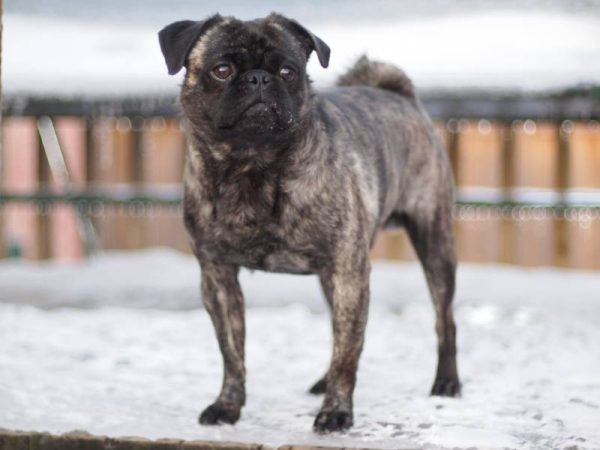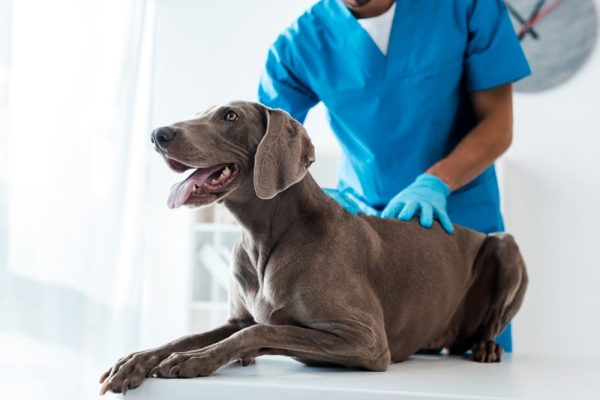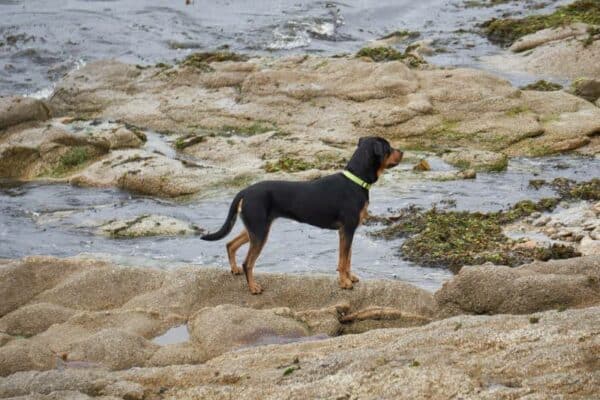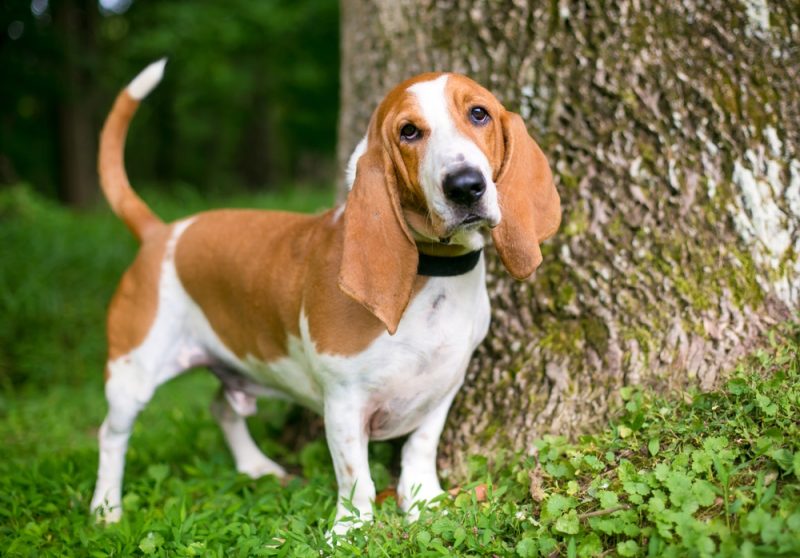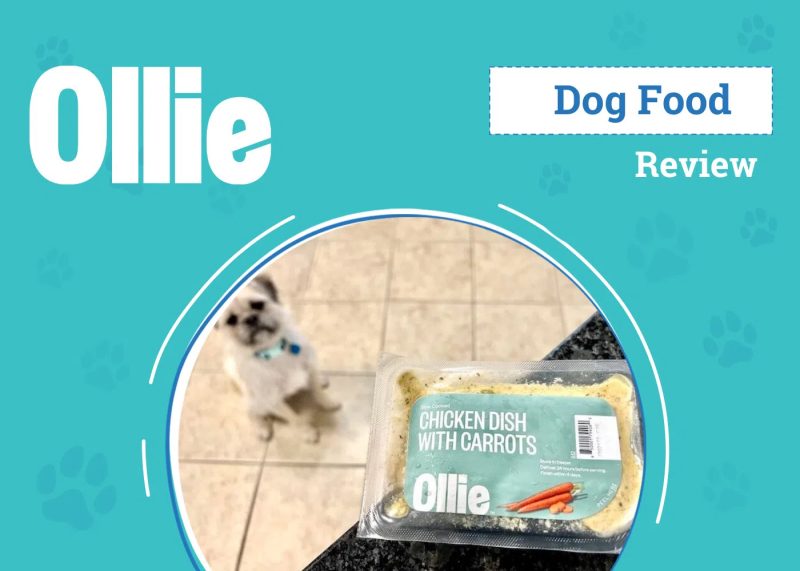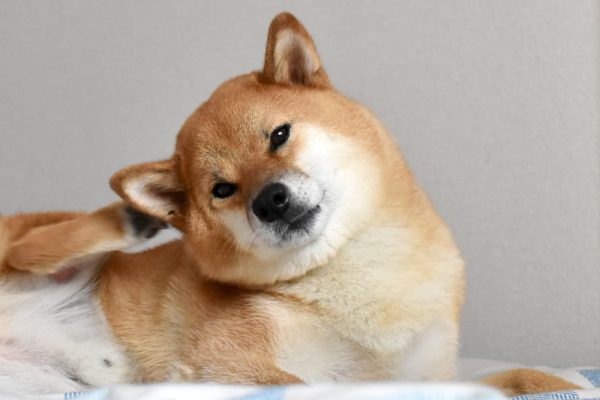In this article
Taking pictures of your adorable dog is an essential part of dog ownership. There are so many endearing moments that are worth capturing. However, taking photos doesn’t come naturally for dogs. It often requires time, patience, and technique to capture high-quality photos of your dog.
Fortunately, you don’t need fancy and expensive photography equipment to start taking good photos of your dog. Making a couple of changes to your approach can make all the difference. Our practical tips and tricks will help you capture beautiful pictures of your dog.

Before You Begin
Before you can begin taking awesome pictures of your dog, there are several things you’ll need that could come in handy. Note that you don’t have to buy expensive equipment; there are plenty of inexpensive tools you can use.
1. Grab a Camera
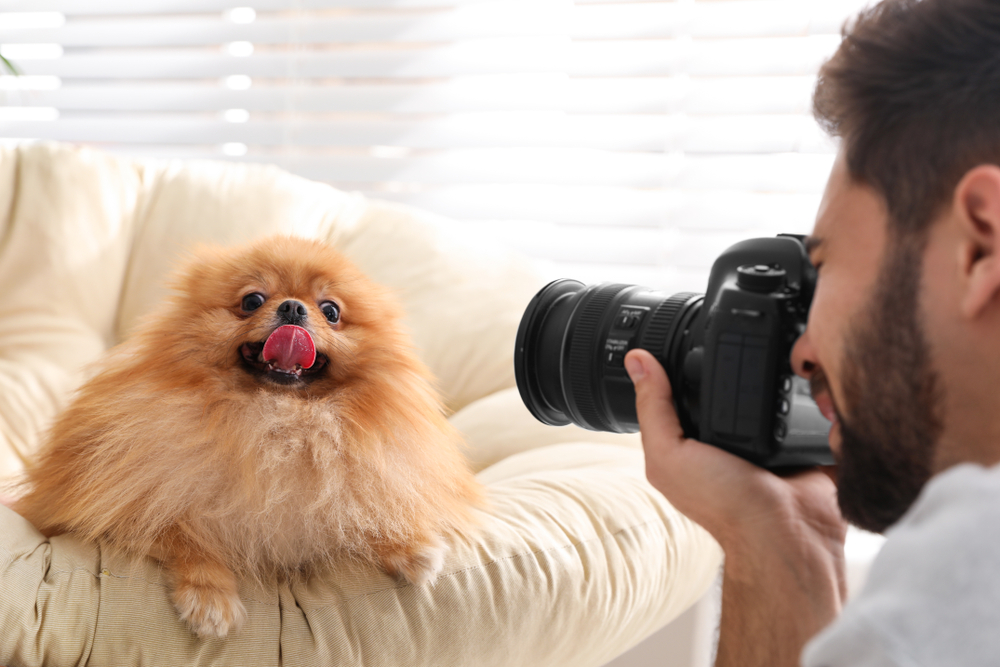
You don’t have to be a professional photographer with an expensive camera to take amazing photos, but if you have one, you can certainly use it. However, many smartphone cameras work just as well. Smartphone cameras often have the basic features that you need to take great photos, including the ability to change the aspect ratio, lighting, and more.
Just keep in mind that it’s just as important to know how to use the tools that are available on your smartphone camera or digital camera. Learning how to focus the pictures, what shutter speeds to use, and more are the keys to taking great photos.
2. Find a Helper
We all know how rambunctious our pets can be, and posing for pictures is not one of their natural instincts. It can help to have a helper on hand to help focus your pet, give you props and costumes, etc. If you’re looking for action shots, they can play with your dog so that you can focus all of your energy onto taking the photo.
It may also make some pets more willing to take a photo and make them more comfortable if you’re in the photo with them. In that case, your assistant can take the photo while you sit with your pet.
3. Check Your Lighting
Natural lighting is best for photos, so have your pet sit next to a sunny window or even outdoors in order to get the best lighting for your pictures. Just be aware of shadows. Harsh sunlight, especially when it’s coming through windows, can cause dark shadows that can ruin photos.
If your home doesn’t get a lot of natural light or you can’t go outside, you can also set up some photography lights. There are some really affordable options you can purchase on Amazon that may be worth it if you’re planning on taking a lot of pictures of your pets. Ring lights are also a great option for taking selfies with your pets.
4. Grab Some Dog Treats
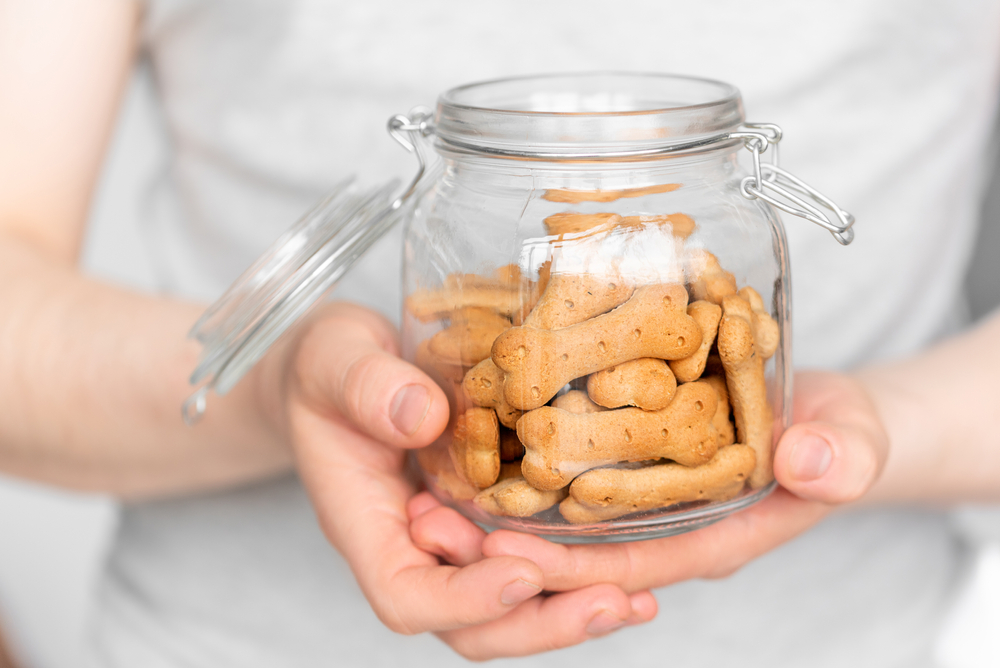
It can be hard for dogs to sit still for photos, especially if they aren’t trained on basic commands. Having treats handy to reward your dog for being still or for doing a good job can help them stay focused if they know they’re going to be rewarded for it.
Having dog treats on hand can also help your dog stay focused on the camera. There are treat holders that you can attach to the top of your phone to give your dog something to focus on while you take their picture. Once you’ve got a photo of them looking at the camera, reward them with the treat.
If your dog isn’t food motivated or just needs some extra help staying focused, a squeaky toy can be a lifesaver. Not only can you use this to get your dog to look at the camera, but it often works to get their ears to perk up, which makes for super adorable photos.
5. Gather Costumes and Props
Depending on the photo occasion, you may want to have some costumes and outfits on hand for your dog to wear. Maybe it’s your dog’s birthday and you want to have them wear a party hat or pose with a cake. Or if you want to take action shots, you may want to have a frisbee or ball on hand for your dog to play with.
This is where having an assistant can be extremely helpful, as they can help change outfits, props, backgrounds, etc.
6. Review Your Basic Commands
For great still shots, your dog will need to know how to sit, lay down, and stay. If it’s been a while since you’ve practiced your basic obedience, take some time to work through these commands with your pup before starting. Be sure to reward them with treats and praise to make the process fun and engaging.
7. Exercise Your Dog Beforehand

A quick way to get your dog calm and focused is to exercise them before your photo session. Do a fun activity with your dog beforehand so that they can expend any pent-up energy and enter the session feeling content.
You can also get some immediate happy shots of your dog because dogs that are panting after exercise often look like they’re smiling. Just make sure not to over-exercise your dog because they’ll be too tired to be engaged and less willing to participate.
8. Make Sure Your Dog Is Groomed
You want your dog to look their best during their photoshoot, so grooming them beforehand is a great idea. You don’t have to take them to a groomer, but it helps to at least bathe them and give them a good brushing. If you have a long-haired or curly-coated dog, you may wish to have them trimmed so that they look their best. You can also add bows and bandanas to your dog before the photoshoot.
The 9 Tips on How to Take Pictures of Your Dog
1. Train Your Dog to Look at the Camera
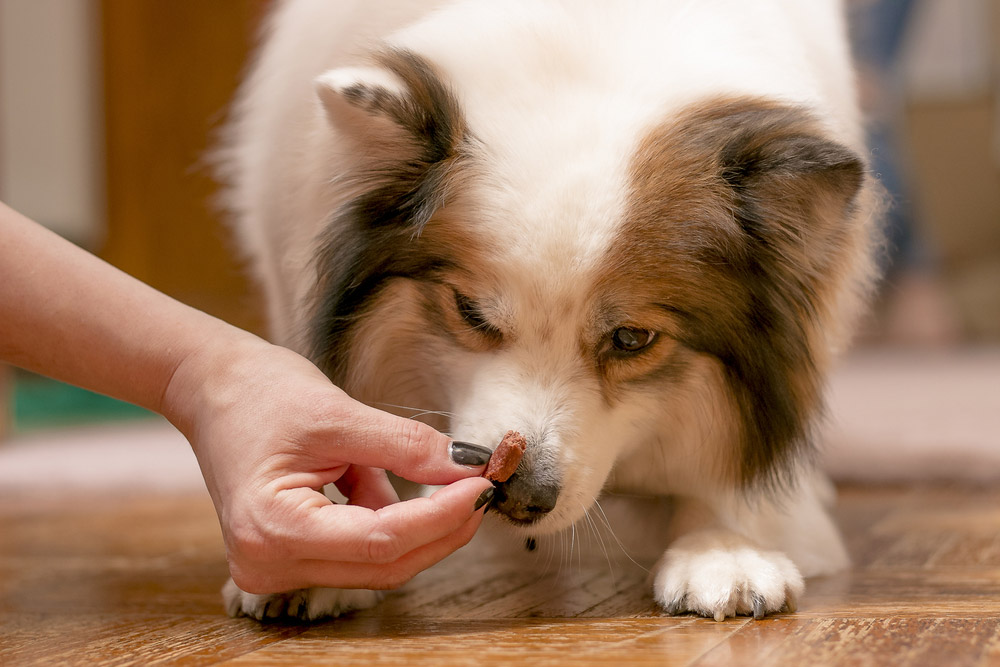
Dogs can learn to look at your camera on command. Start by having your dog sit. Then, place a treat in front of your camera lens. The moment your dog looks at the treat, reward your dog with praise and give them the treat.
Once your dog understands and looks at the treat consistently, add a command, such as “camera” or “look here.” After your dog starts looking at the camera automatically after giving the command, take the treat away and only use the command. Reward them with a treat every time they respond correctly to the command.
Treats will become your best friend for photoshoots if you have a food-motivated dog. Taking photos will feel unnatural to dogs, and many are quick to become unwilling participants. Having special treats reserved just for photo taking can keep your dog interested and motivated for longer. With time and consistency, your dog may even learn to look forward to taking photos because they’ll know that they’ll get some special treats if they participate.
2. Introduce Your Dog to the Photography Set
If you’re planning to use a photography set or backdrop, make sure to schedule time for your dog to get used to the new environment. Give your dog time to explore, sniff around, and get comfortable on the set.
Use this introductory time to identify and remove any items that may be too distracting for your dog. This is also a great time to make necessary rearrangements to your set. Sometimes, a set can contain too many items that will drown out your dog and draw them away from being the focal point.
3. Keep Backgrounds Neutral
If your pet is going to be the focus of the photo, you want a neutral and uncluttered background. You don’t want to have a messy or dirty background. It’s okay to use backdrops for taking photos, but you still want them to look relatively neutral and clean, especially if you’re going to be using props and decorations for the photos as well.
Changing the depth of field can blur the background to make your dog the focal point of the photo. On a traditional camera, you can do this by adjusting your aperture or f-stop. Most phone cameras adjust the focal point automatically to add some degree of blur to the background when taking photos of pets and people. Alternatively, you can use portrait mode to really make your dog pop against a highly blurred background.
4. Use Fast Shutter Speeds and Burst Mode, Especially for Action Shots
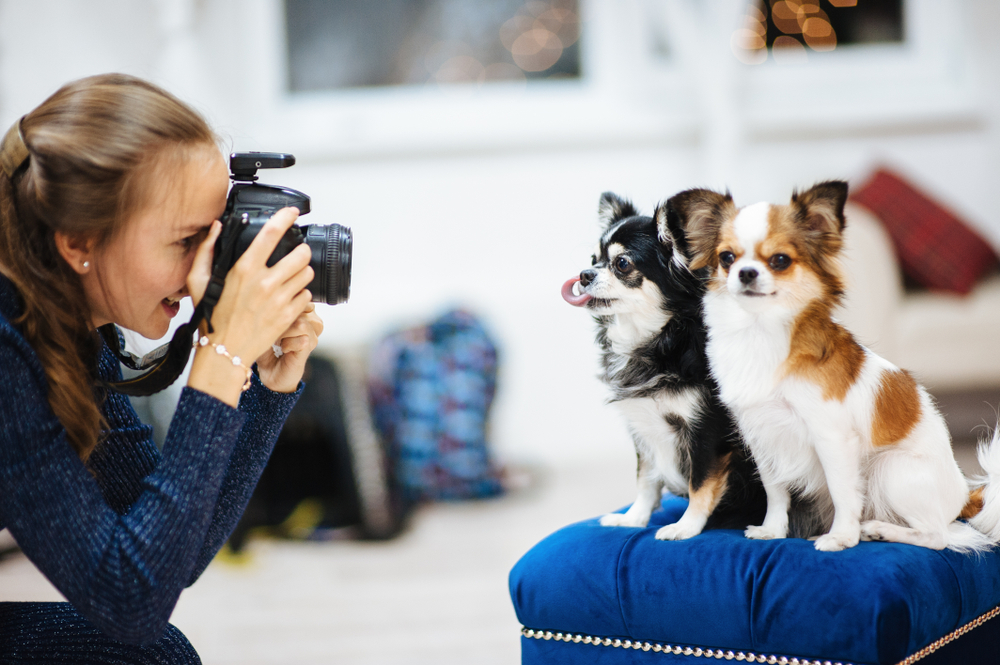
Faster shutter speeds may take some movement out of a photo, but they can be used to take clear images of your dog, especially if you want to take some action shots of your dog playing. Dogs can be unpredictable and move around a lot, and changing the shutter speed on your camera can reduce the likelihood of taking blurry photos.
It’s also helpful to use the burst mode on your camera, which enables you to take multiple photos with one click. Be prepared to take numerous photos of your dog, as it’s common to find 1 good photo for every 20 photos you take.
5. Get on Your Dog’s Level
Be prepared to get down to your dog’s level, even if it means sitting or lying down on the ground. This can help keep your dog as the main focus of the photo and keep you from taking only overhead shots. Plus your dog may be more likely to focus on you if you’re down closer to them.
Get creative and take photos of specific features of your dog rather than trying to get a full-body portrait. Many stunning dog photos are close-ups of their eyes or adorable paws.
If you’re a beginner, familiarize yourself with using the rule of thirds. While it may seem counterintuitive at first, placing your subject a little off-center often helps to draw the viewer’s eyes to them and creates an overall more balanced photo.
6. Experiment with Different Angles
Sometimes the way the subject is framed can make or break the photo. It’s okay to take photos from different angles. Try taking photos that are zoomed in, farther back, a little to one side, or even upside down. You never know, you may get the perfect pet photo if you think outside the box a little bit.
7. Schedule Multiple Breaks
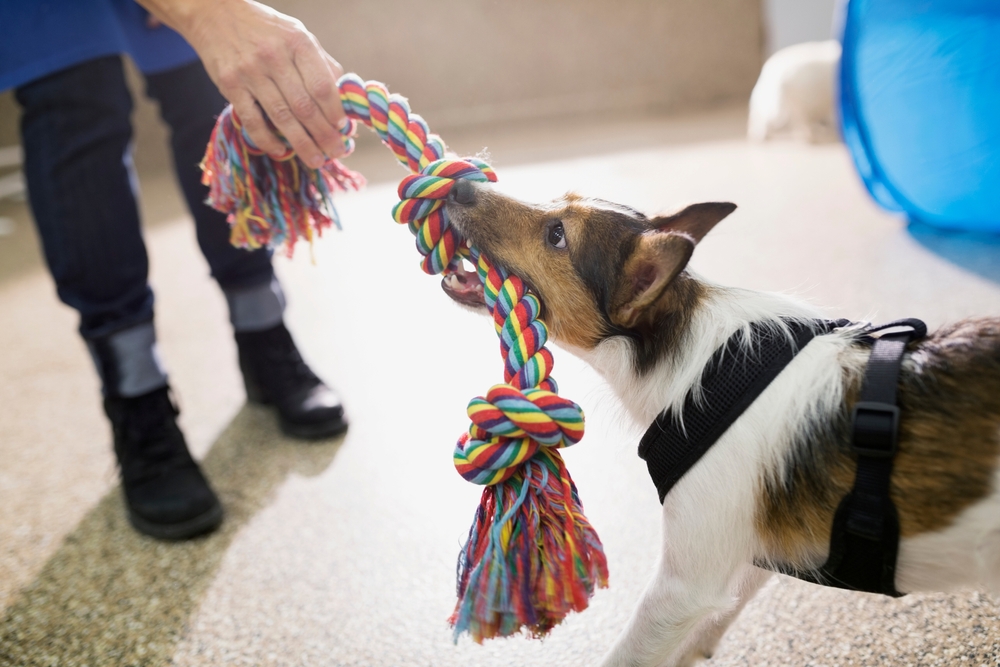
It’s unrealistic to expect dogs to sit through a long photoshoot and be on their best behavior. So, make sure to schedule multiple breaks throughout, and use those breaks to play with your dog or take them outside to go potty. It’s common to take photos for 5 to 10 minutes before taking a short break.
Scheduling breaks will prevent boredom and frustration from your dog. They can end up helping you save more time by producing high-quality photos where your dog looks happy and content rather than bored and disengaged. If your dog just isn’t into taking photos right now, you may have to try again later when they’re more responsive and engaged.
8. Use Natural Lighting
Natural lighting adds warmth to photos. Bright photography lights can make dogs feel uncomfortable, so it’s often easier to take photos in a bright room with a window. Plus, natural lighting adds warmth to photos.
Of course, using natural lighting requires more advanced planning. Make sure to schedule your photoshoot in the morning or early afternoon. You can even take advantage of golden hours, which are typically the hour before sunset or the hour after sunrise. These times usually create beautiful natural lighting, and you can end up taking stunning photos without much effort.
If you don’t have natural lighting at your home, consider investing in some photography lights, or shooting photos on location, such as at a park or the beach.
9. Show Off Your Dog’s Personality
Dogs are very easy to read, and they’ll make it quite clear when they’re not having fun or enjoying the moment. If your dog isn’t engaged in your photoshoot, it’ll show up in your photos.
You can make your photoshoot fun by letting your dog do things that they enjoy, and this will show their true personality better than staged photos. Take action shots if your dog’s energetic or add toys to your set if you have a playful dog. Make sure to also be mindful of your tone. Keep it bright and encouraging, as your dog is very likely to become unhappy or frustrated if you speak to them in an aggravated or annoyed tone.
Conclusion
Getting high-quality photos of your dog often requires making creative adjustments. Make sure to exercise your dog beforehand and take photos of them when they’re calm and settled or in a good mood. It’s also important to make photoshoots as fun and enjoyable as possible for dogs and to remember to take a ton of photos. Bringing a creative and flexible approach to pet photography will make all the difference in producing beautiful and unique photos of your dog.
Featured Image Credit: Krakenimages.com, Shutterstock
